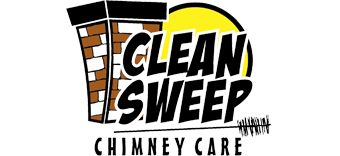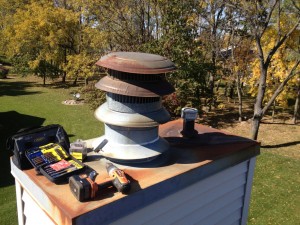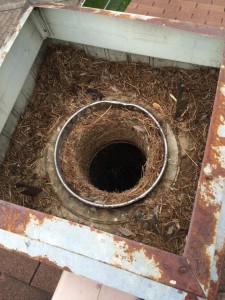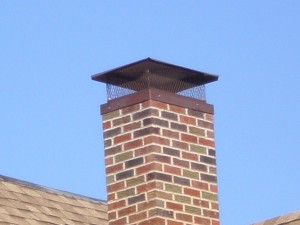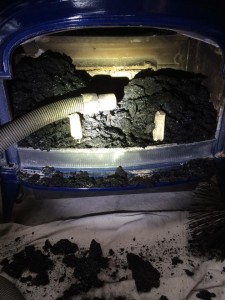Q. My fireplace stinks, especially in the summer. What can I do?
The smell is due to creosote deposits in the chimney, a natural byproduct of woodburning. The odor is usually worse in the summer when the humidity is high and the air conditioner is turned on. A good sweeping will help but usually won’t solve the problem completely. There are commercial chimney deodorants that work pretty well, and many people have good results with baking soda or even kitty litter set in the fireplace. The real problem is the air being drawn down the chimney, a symptom of overall pressure problems in the house. Some make-up air should be introduced somewhere else in the house. A tight sealing, top mounted damper will also reduce this air flow coming down the chimney.
Q. When I build a fire in my upstairs fireplace, I get smoke from the basement fireplace.
This has become quite a common problem in modern air tight houses where weather-proofing has sealed up the usual air infiltration routes. The fireplace in use exhausts household air until a negative pressure situation exists. If the house is fairly tight, the simplest route for makeup air to enter the structure is often the unused fireplace chimney. As air is drawn down this unused flue, it picks up smoke that is exiting nearby from the fireplace in use and delivers the smoke to the living area. The best solution is to provide makeup air to the house so the negative pressure problem no longer exists, thus eliminating not only the smoke problem, but also the potential for carbon monoxide to be drawn back down the furnace chimney. A secondary solution is to install a top mount damper on the fireplace that is used the least.
Q. I heat with gas. Should this chimney be checked too?
Without a doubt! Although gas is generally a clean burning fuel, the chimney can become non-functional from bird nests or other debris blocking the flue. Modern furnaces can also cause many problems with the average flues intended to vent the older generation of furnaces. We suggest you check the areas on gas and carbon monoxide for more information.
Q: How do I know if he really cleaned my chimney? In the past, sweeps we’ve hired have always gone on the roof, checked the flashing, the mortar and all the workings of the chimney and then cleaned the chimney from the top of the house. Today, this sweep came in, looked into my fireplace from the bottom and said we don’t need it cleaned because he can still see the bricks. I asked to have it cleaned anyway. He then grabbed a wire brush and simply rubbed away any buildup from the main opening to the fireplace without even going up into the chimney to clean anything. Am I way off base, or did the sweep charge me without cleaning my chimney?
Your past experiences with chimney sweeps sound as though the sweep did the job he was hired to do. However, your most recent experience sounds a bit odd. If the sweep agreed to do a complete sweeping and only cleaned the brick in the fireplace firebox, you did not get the service that you paid for. A complete chimney sweeping includes the chimney flue and smoke chamber.
In the future you could ask for a Level 1 chimney inspection and a chimney sweeping. If the sweep doesn’t know what a Level 1 inspection is, find one that does. A Level 1 inspection is detailed in the National Fire Protection Association 211: Standard on Chimneys, Fireplaces, Vents and Solid Fuel-Burning Appliances.
– See more at: Chimney Safety Institute of Amercia
